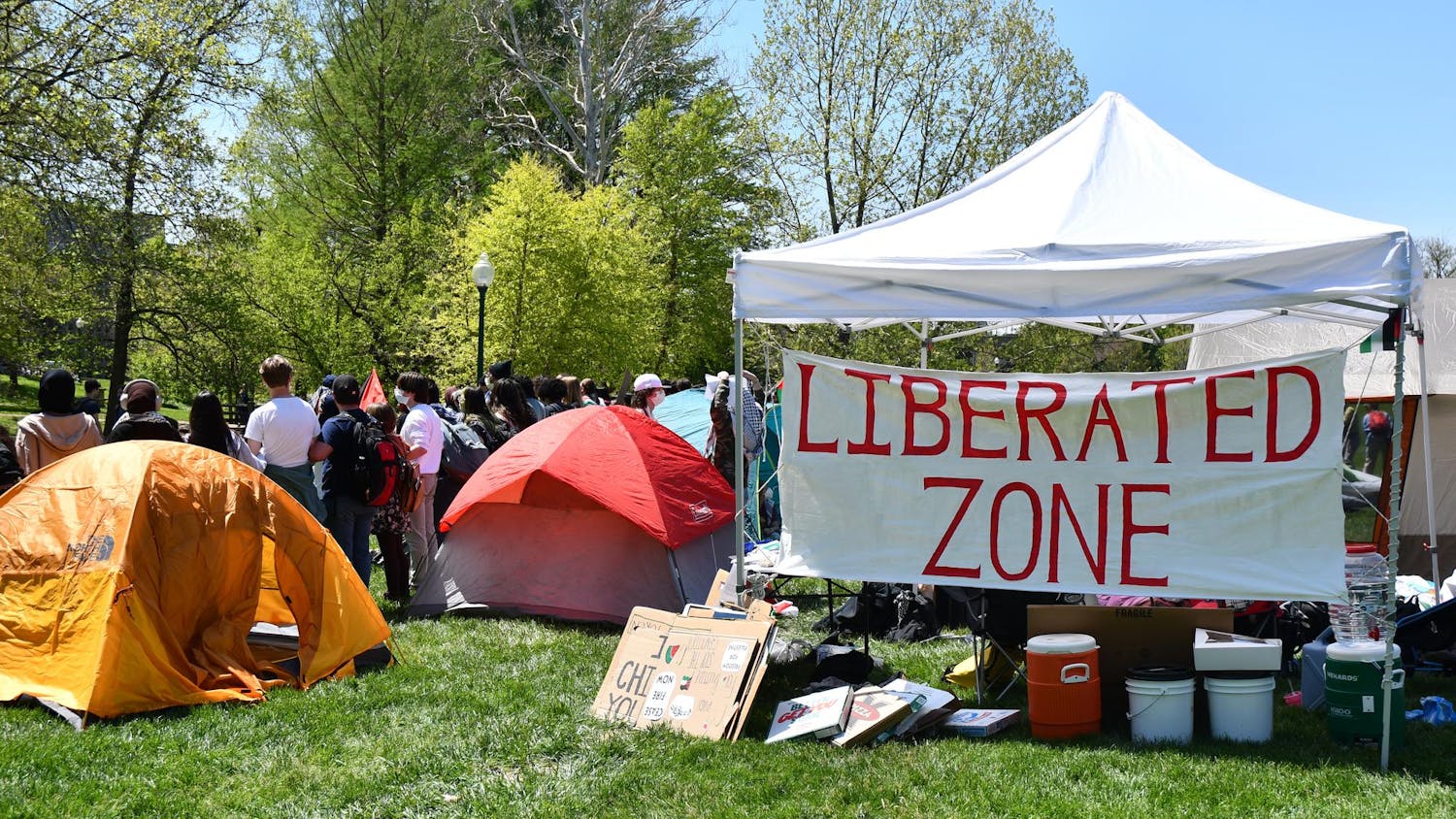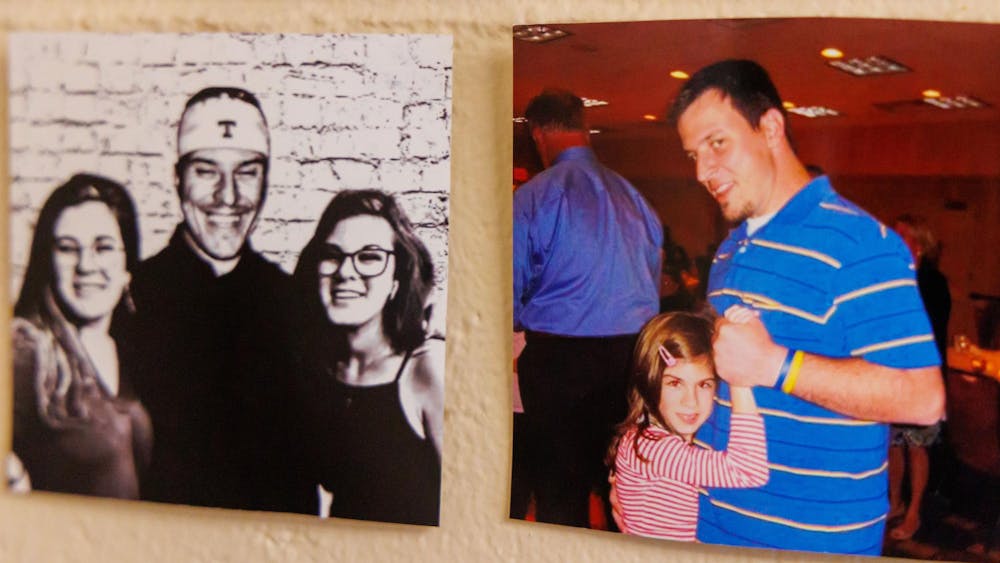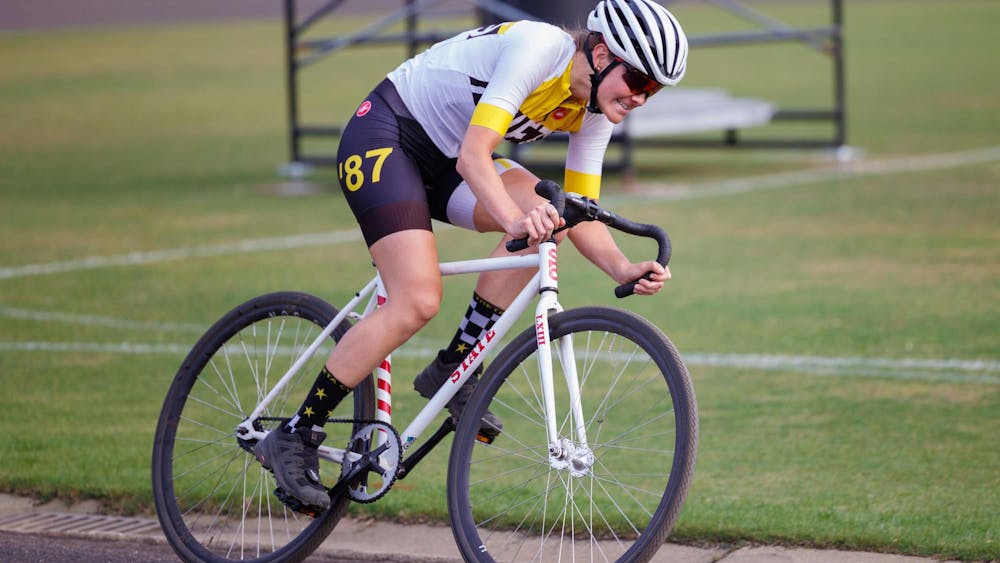In the 1960s, Dunn Meadow stood for more than just a Frisbee-friendly field or the venue for the occasional concert. Former students like John Irvine remember when Dunn Meadow was the hot bed for daily demonstrations.\n"I remember demonstrations where you couldn't even step into the meadow," said Irvine, who is now the director of student legal services. "The density of the crowd was so packed, and they would stretch from Indiana Avenue to even the corner of the Union. Indiana Avenue was occupied by students so thick that you could not walk down the street."\nDunn Meadow has a history of being a place for protest. Ever since the University designated the field as IU's free speech zone in 1963, it has been the setting for protests against the Vietnam War, tuition increases, apartheid and affirmative action. But 40 years later, some question whether the location is still appropriate and whether students really take advantage of their right to assembly.\n"The importance of Dunn Meadow to the campus is sometimes overlooked until an issue ignites campus interest," former Director of Campus Relations Perry Metz said. "People always have valued a place to gather, to speak their minds, to persuade others. That's a vital part of a university community."
The Breaking Point\nOn Oct. 24, 1962, thousands of IU students marched across the campus to demonstrate their allegiance to President Kennedy's involvement with the Cuban missle crisis. Chants such as "Block that ship," and "To hell with Fidel," sung out over the crowd. When the students arrived on the scene, they found themselves confronted with pro-Cuban protesters from the Ad Hoc Committee to Oppose U.S. Aggression, complete with picket signs saying, "Yankee Si, Cuba No" and "Pinks Stink."\nWhat started as a peaceful protest broke out into violence when police arrested one man after he grabbed a sign from a female picketer, which he used to strike her on the head.\nIn a time where most of America was afraid of communism, IU President Elvis J. Stahr blamed the violence squarely on the pro-Cuban protesters.\n"I think it is significant that out of a student body of 17,804 only a few hundred were unable to refrain from heckling this so called 'committee,'" Stahr said in a statement published in the Indianapolis Star.\nAccording to confidential documents of the Bloomington Faculty Council, Stahr expressed his outrage at the protesters, saying that unrecognized organizations, such as the Ad Hoc Committee, should not be allowed to demonstrate on the campus. The compromise resulted with a committee formed to analyze free speech at IU. Eventually, in July of 1963, the IU Board of Trustees approved the council recommendation that Dunn Meadow be designated as IU's assembly grounds.\nDunn Meadow was initially selected because it was a central location that would allow demonstrators to reach a large number of students without distracting classes.\n"There was no business school," Irvine said. "There was no SPEA. There was no library. There was no arts museum. So, when Dunn Meadow was picked, it was the center of campus. It was where everybody, to get to places, crossed."
Campus Unrest\nAlthough Stahr thought he had resolved the issue of protests on campus, the next few years would put free speech to his test as demonstrations over the Vietnam War and tuition increases led to conflict and even violence.\nInterim IU-Bloomington Chancellor Ken Gros Louis said a Vietnam War demonstration was one of the most extreme protests he ever saw at IU.\n"I remember when a serious fire broke out in what was then the library and is now Franklin Hall," Gros Louis said. "It was quite dramatic, with Dunn Meadow filled with protesters and the flames leaping out of the library."\nIU students in the late 1960s didn't just have a war on their minds, but rising costs of tuition led many students to revolt against the University.\nIn 1969, IU trustees passed a $130 fee increase for in-state students and a $220 increase for out-of-state students. The tuition hike sparked months of students boycotting classes, and the American Association of University Professors voted to not penalize students for missing class for the protests. As classes were skipped, daily protests filled Dunn Meadow.\nBut the real boiling point was yet to come. On May 9, 1969, about 300 students barged into the BFC's emergency meeting at Ballantine Hall and locked the faculty inside. The faculty were kept in the smoke-filled room until Acting Chancellor John W. Snyder said they would discuss the tuition increase with the trustees next week. \nThe trustees met with 12 students to discuss the fee increase two days later. The fee remained, and several students were sentenced for kidnapping in the following months.
Live-in Protests\nAs protests continued, one of the most notable demonstrations which questioned the use of Dunn Meadow was the construction of Shantytown in 1987, a camping village meant to show solidarity against IU's investments in South African apartheid corporations. \nDean of Students Richard McKaig said when Shantytown was constructed, he received several questions about their ability to sleep in the field. But he said a recent U.S. Supreme Court decision at the time helped him to understand what could be accepted.\n"Tenting is beyond the rights of free speech," he said. "Dunn Meadow is not designated for camping, and so you just can't create a homeless community to sleep in."\nAt the time, McKaig was quoted in the Indiana Daily Student as saying, "It seems it is more about Shantytown and less about South Africa." \nHis compromise, as it is stated in the campus codes, permitted the tents to remain as long as they weren't left alone and prohibited protesters from sleeping on the grounds.\nIU history Professor James Madison agreed, saying it showed campus solidarity.\n"I admired this one a great deal," he said. "It demonstrated to IU administration and trustees that students really did care about a place on the other side of the world and about our role in it. I think it had an effect."
The Future of Free Speech\nProtests are still common in Dunn Meadow. Four years ago, the IU Center for Bio-Ethical Reform filed a lawsuit because it was not allowed to hold an anti-abortion rally between Woodburn and Ballantine Halls. The University denied this request forcing them to move to Dunn Meadow, where they could protest freely.\nMike Wilkerson, assistant to the vice presidents for Student Development and Diversity, Research and Information Technology, said he questioned whether that space was appropriate for such a protest.\n"The content of the protest, and the ones that have followed it, bothers me," he said. "I have a position on abortion, and I don't mind protests, but the taunting and the medical photos one has to view on the way to class and lunch are difficult to bear. I much prefer a less belligerent form, such as rallies, encampments, even bake sales. I wonder if the protesters would like to view photos of my colonoscopy on their way to lunch?"\nRecently, an anti-affirmative action bake sale, organized by sophomore Stephan Jerabek, caused controversy. Several students tried to shut down his protest, saying it created a dangerous environment.\n"To those people, I would like to say that shutting me up, or anyone else for that matter, is not the solution but will instead exacerbate the problem," Jerabek said. "It is interesting that anyone in a mob of 60 plus people could feel intimidated by three to six people armed only with three boxes of cookies."\nIncidents like these bring up the question of whether one place for free speech is truly fair in a university setting.\n"Unfortunately, by having Dunn Meadow designated as IU's 'free speech zone,' it implies that free speech can be limited or abbreviated elsewhere on the campus, with no warning from the administration," Jerabek said. "That's a scary thought."\nMcKaig said it is a concept that is being questioned at many campuses.\n"It wasn't common to have a free speech zone in 1963, but it has become more common since the 1970s," he said. "Some institutions say the free speech zones are the only place for free speech. But the trend seems to be going away from a designated free speech zone at most universities."\nOthers have questioned the location of the free speech zone, saying that Dunn Meadow is no longer the center of campus. As a result, many people are suggesting new places for protest.\nMcKaig said he will meet with Gros Louis and Irvine in the near future to discuss possibility of alternative free speech zones on campus.\n"Dunn Meadow's location is certainly being redefined, and I am actually going to put together a committee to examine free speech at IU, and the location of the free speech zone will be something we will discuss," he said.\nMcKaig added that free speech is not limited to just Dunn Meadow and that students can protest at other places with permission ahead of time. But at Dunn Meadow, no further notice is required and no one can be denied a place to express their opinions.\nStill, despite arguments surrounding the effectiveness of Dunn Meadow's locations, Metz said it's comforting that no matter what your belief, there always is a place to go to be heard.\n"An advantage of a designated place is that people always know where to congregate when they need to"





